|
Vocapedia >
War > U.S. Army >
Soldiers > Corps, Ranks
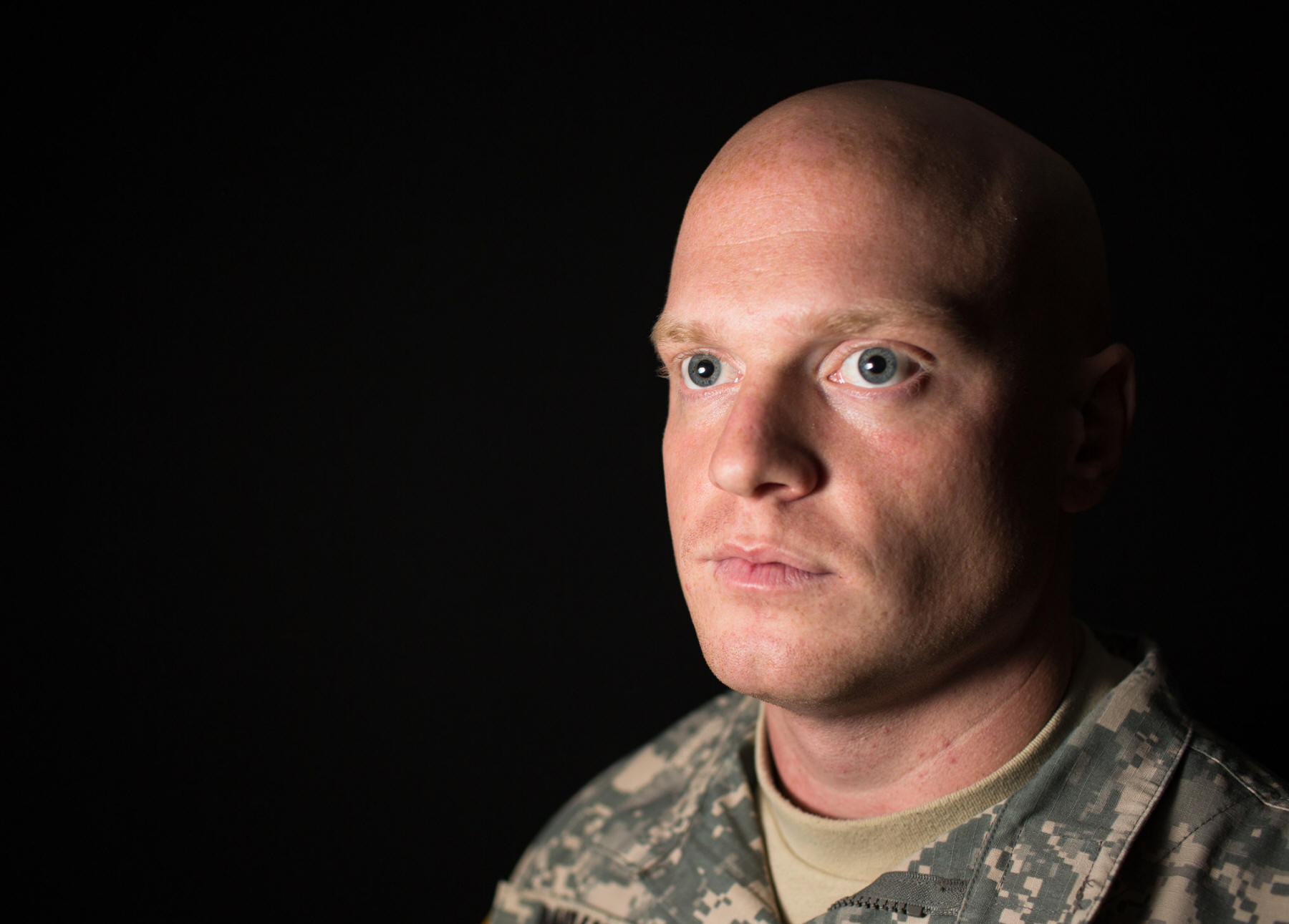
“You can compare it to a football player who trains for years
and doesn’t want to sit on the bench for the Super Bowl.”
LT. ANDREW MAYVILLE,
back home at Fort Drum, N.Y.,
but applying to the Special Forces
Photograph: Brett Carlsen
for The New York Times
After Years at War, the Army Adapts to Garrison
Life
NYT
18 January 2014
https://www.nytimes.com/2014/01/19/
us/after-years-at-war-the-army-adapts-to-garrison-life.html
AIr Force
https://www.airforce.com/
the United States Air Force Memorial
https://en.wikipedia.org/wiki/
United_States_Air_Force_Memorial
The United States Air Force Thunderbirds
pilot
http://www.nytimes.com/2010/12/24/
world/24harg.html
fly
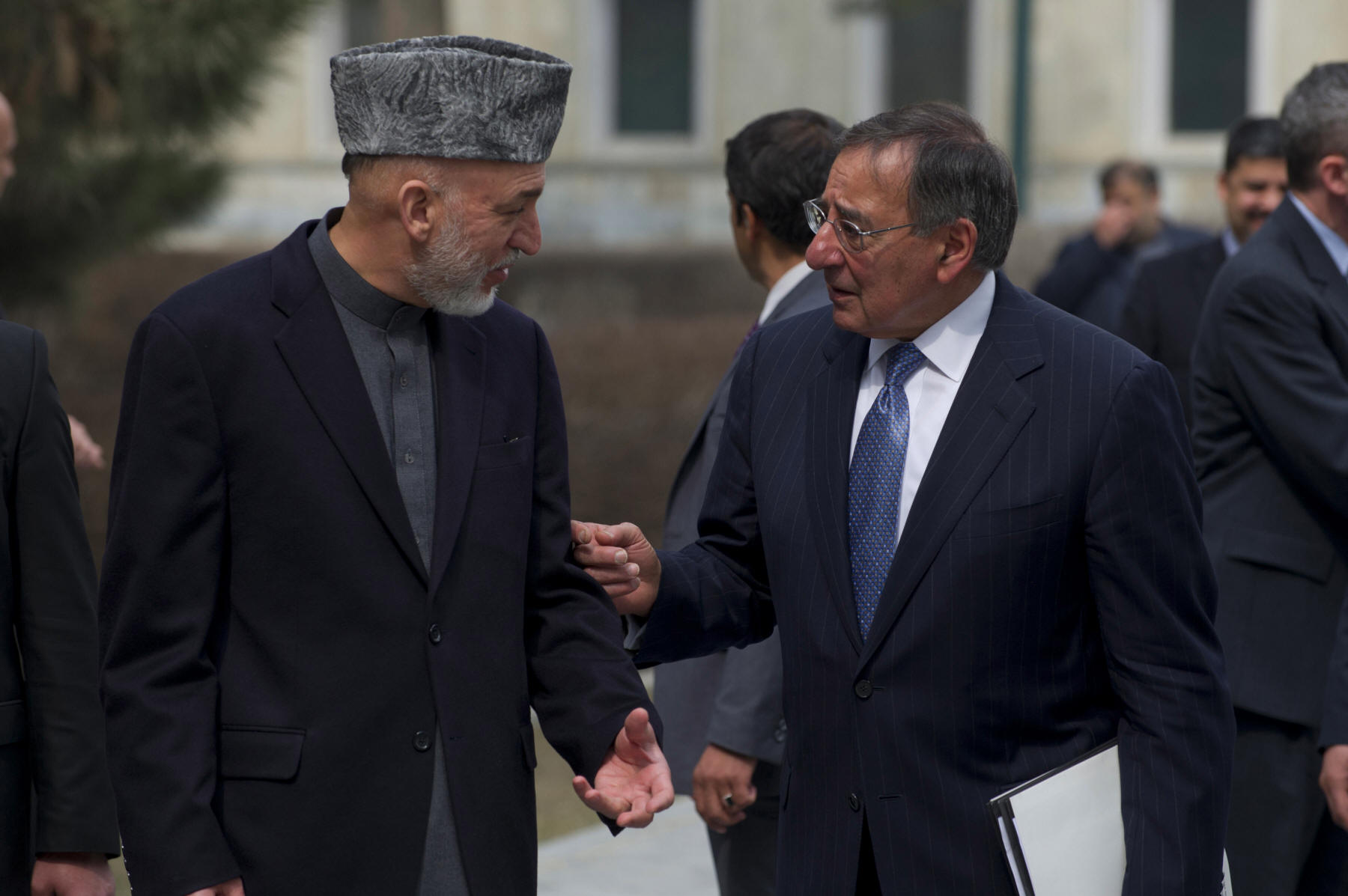
Secretary
of Defense Leon E. Panett
speaks with Afghan President Hamid Karzi
while
walking in Kabul, Afghanistan,
on March 15, 2012.
DoD photo
by Petty Officer 1st Class Chad J. McNeeley, U.S. Navy.
(Released)
120315-D-TT977-077.jpg
http://www.defense.gov//Photos/NewsPhoto.aspx?NewsPhotoID=15179
forces
armed forces
contingent
troops
allies
service member
underling
platoon leader
battalion
http://www.nytimes.com/2010/06/27/world/27battalion.html
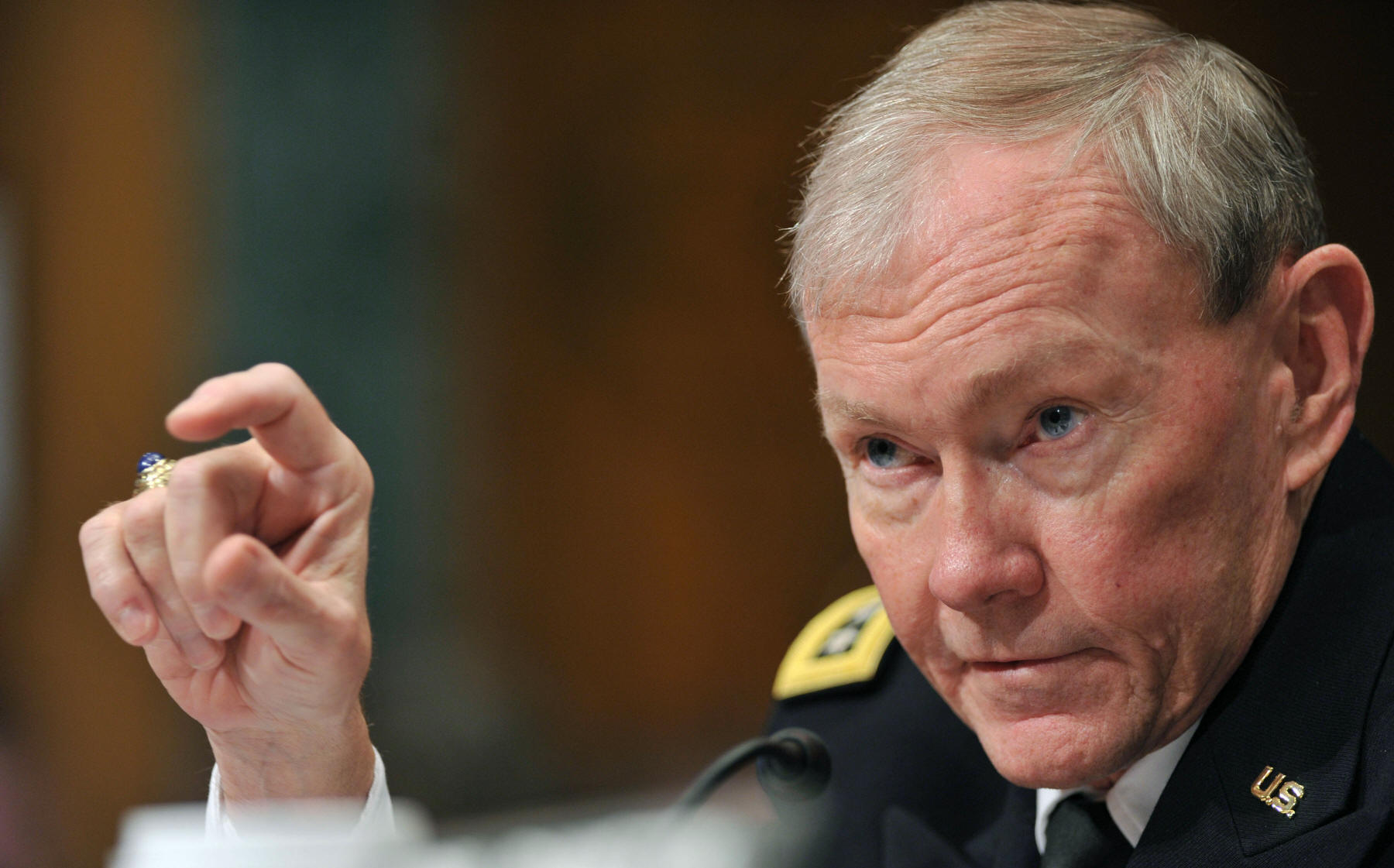
Chairman
of the Joint Chiefs of Staff Gen. Martin E. Dempsey
takes questions
as he and
Secretary of Defense Leon E. Panetta
appear
before the Senate Budget Committee
to testify
on the President's FY 2013 budget request
on Feb. 28, 2012.
DoD photo
by Glenn Fawcett. (Released) 120228-D-NI589-441.JPG
Defense.gov News Photos
http://www.defense.gov//Photos/NewsPhoto.aspx?NewsPhotoID=15125
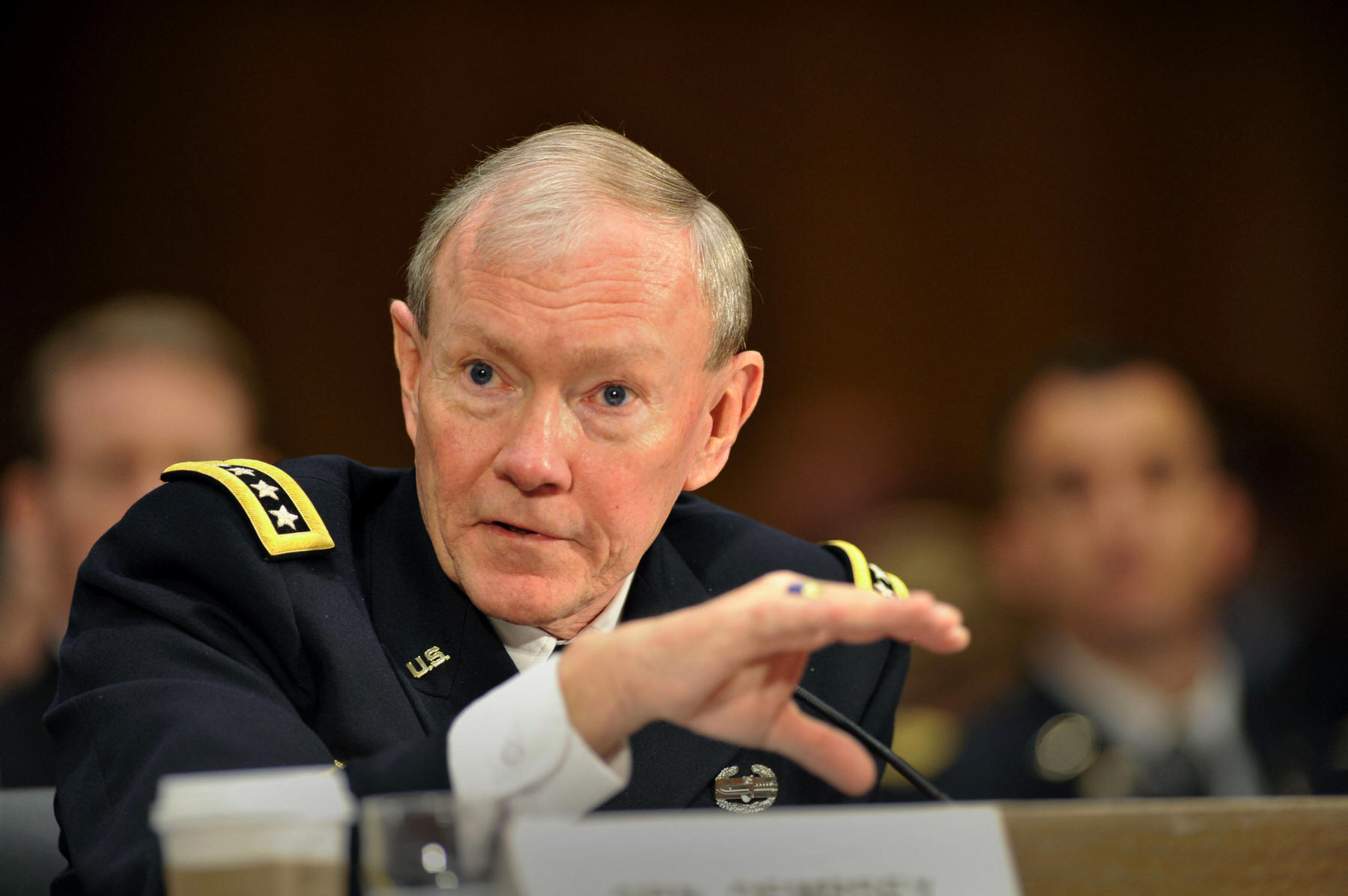
Chairman
of the Joint Chiefs of Staff Gen. Martin E. Dempsey
testifies
in a hearing before the Senate Armed Services Committee
on the situation in
Syria on March 7, 2012.
DoD photo
by Glenn Fawcett. (Released)
120307-D-NI589-393.JPG
Defense.gov News Photos
http://www.defense.gov/dodcmsshare/newsphoto/2012-03/hires_120307-D-NI589-393.JPG
http://www.defense.gov//Photos/NewsPhoto.aspx?NewsPhotoID=15158
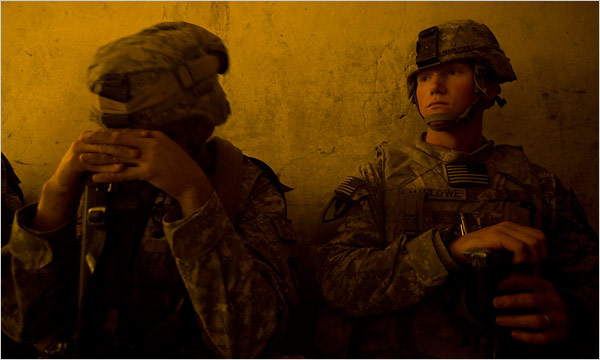
American soldiers prepared last week
for a
possible Taliban attack at a small castle at their base,
Combat Outpost Lowell,
which is near Afghanistan’s border with Pakistan
and is a
frequent target of attacks.
Photograph:
Tyler Hicks
The New York Times
G.I.’s in Remote Post
Have Weary Job, Drawing Fire
NYT
10 November 2008
https://www.nytimes.com/2008/11/10/
world/asia/10outpost.html
NPR podcasts > 2025
NPR podcasts > before 2025
Pentagon / U.S.
Department of Defense
https://www.nytimes.com/topic/organization/
us-department-of-defense
https://www.npr.org/2025/09/04/
nx-s1-5529420/trump-department-of-war-department-of-defense
https://www.npr.org/2025/06/22/
nx-s1-5441241/trump-iran-airstrikes-pentagon-news-conference
https://theintercept.com/2021/07/06/
military-africa-sexual-assault/
https://www.npr.org/2021/07/06/
1013420036/pentagon-scraps-10-billion-contract-with-microsoft-
bitterly-contested-by-amazon
https://www.npr.org/2021/03/31/
983118029/pentagon-releases-new-policies-
enabling-transgender-people-to-serve-in-the-milit
https://www.npr.org/sections/parallels/2018/05/02/
607525467/pentagons-no-2-watches-the-money-and-the-future
http://www.npr.org/2016/10/22/
498398032/as-military-moving-costs-rise-its-difficult-for-officials-to-keep-track
http://www.nytimes.com/2015/04/28/
opinion/preparing-for-warfare-in-cyberspace.html
http://www.nytimes.com/2014/03/05/
opinion/invitation-to-a-dialogue-a-smaller-army.html
http://www.nytimes.com/2013/06/04/
opinion/dont-trust-the-pentagon-to-end-rape.html
http://www.nytimes.com/2013/01/24/us/
pentagon-says-it-is-lifting-ban-on-women-in-combat.html
http://www.nytimes.com/2013/01/21/
opinion/keller-chuck-hagels-war.html
http://www.nytimes.com/2009/06/23/world/americas/
23military.html
http://www.nytimes.com/2008/04/20/washington/
20generals.html
https://www.nytimes.com/2004/11/13/
technology/pentagon-envisioning-a-costly-internet-for-war.html
discipline
http://www.nytimes.com/2016/03/18/us/
politics/us-service-members-punished-for-strike-on-afghan-hospital.html
Pentagon > Cybersecurity force
http://www.nytimes.com/2013/01/28/us/
pentagon-to-beef-up-cybersecurity-force-to-counter-attacks.html
https://www.nytimes.com/2004/11/13/
technology/pentagon-envisioning-a-costly-internet-for-war.html
Pentagon > Budget cuts > Smaller Army
http://www.nytimes.com/2014/03/05/
opinion/invitation-to-a-dialogue-a-smaller-army.html
http://www.nytimes.com/2014/02/26/
opinion/a-military-budget-to-fit-the-times.html
http://www.nytimes.com/2014/02/24/us/
politics/pentagon-plans-to-shrink-army-to-pre-world-war-ii-level.html
military budget
http://www.nytimes.com/2016/02/29/
opinion/a-better-not-bigger-military-budget.html
defense budget
http://www.nytimes.com/2010/02/04/
opinion/04thur1.html
Defense Secretary
http://www.npr.org/2016/01/29/
464811031/defense-secretary-carter-we-need-to-accelerate-the-defeat-of-isil
http://www.nytimes.com/2005/05/11/
politics/11rumsfeld.html
Secretary of Defense
https://www.defense.gov/
Central Command
http://www.npr.org/sections/thetwo-way/2017/03/09/
519490842/top-u-s-military-official-takes-full-responsibility-for-controversial-yemen-raid
Top U.S. Military Official > the head of U.S. Central Command
http://www.npr.org/sections/thetwo-way/2017/03/09/
519490842/top-u-s-military-official-takes-full-responsibility-for-controversial-yemen-raid
The U.S. Army, the country’s
largest military branch
https://www.propublica.org/article/
us-army-soldiers-violent-crimes - April 19, 2024
Army Secretary
World War 2 (1939-1945) > 'ghost army'
https://www.nytimes.com/2021/09/11/
world/europe/gilbert-seltzer-dead.html
defense secretary
senior Pentagon official
American troops / U.S. troops
https://www.npr.org/sections/parallels/2018/04/28/
605662771/the-military-doesnt-advertise-it-but-u-s-troops-are-all-over-africa
https://www.npr.org/sections/thetwo-way/2018/04/25/
605907287/pentagon-cites-multiple-missteps-that-led-to-ambush-of-u-s-troops-in-niger
the American military / the U.S. military / the
military
https://www.npr.org/2021/04/07/
984700148/the-military-confronts-extremism-one-conversation-at-a-time
https://www.npr.org/sections/thetwo-way/2017/10/20/
558757043/the-u-s-military-in-africa-a-discreet-presence-in-many-places
the military
https://www.npr.org/sections/parallels/2018/04/28/
605662771/the-military-doesnt-advertise-it-but-u-s-troops-are-all-over-africa
in the military
https://www.npr.org/2021/03/31/
983118029/pentagon-releases-new-policies-
enabling-transgender-people-to-serve-in-the-milit
http://www.nytimes.com/2013/11/07/us/
reports-of-military-sexual-assault-rise-sharply.html
women in military service
http://www.nytimes.com/2013/01/24/
opinion/collins-arms-and-the-women.html
the American military / the U.S. military
the U.S. Army
https://www.nytimes.com/2024/10/29/
us/politics/us-military-army-china.html
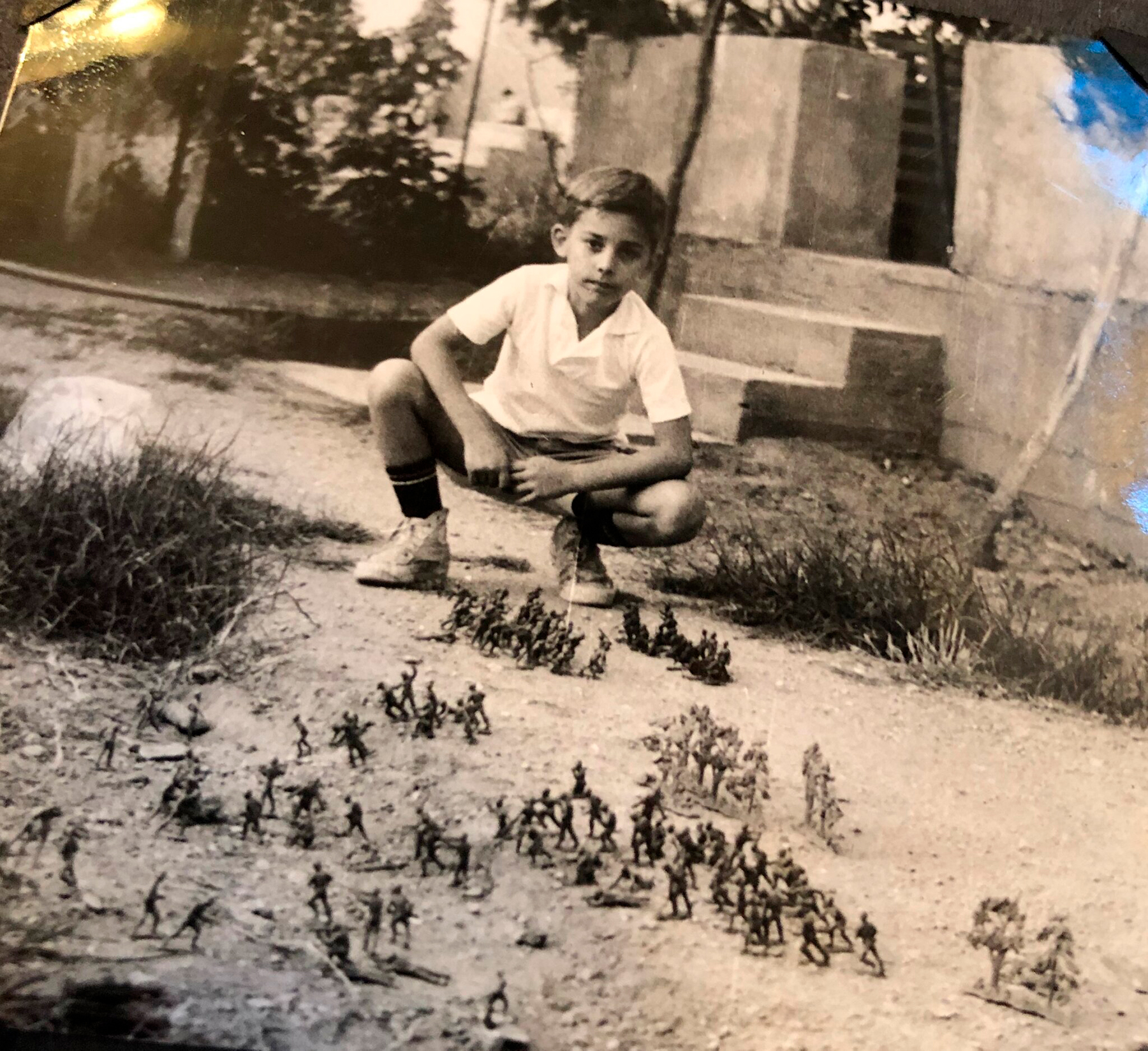
James Stavridis playing war games in 1963,
long before he would become a four-star
admiral.
Photograph: via
James Stavridis
For Veterans Day,
Some Former Military Officers
Reflect on
Lessons From Their Parents
The values that shaped them include
leadership,
optimism and charting your own course.
NYT
Nov. 10, 2020
https://www.nytimes.com/2020/11/10/
well/family/for-veterans-day-some-former-military-officers-reflect-on-lessons-from-their-parents.html
the U.S. Navy
https://www.propublica.org/article/
despite-reform-to-military-justice-system-navy-leaves-public-in-dark -
August 24, 2023
https://www.npr.org/2014/10/10/
353565847/a-phone-call-helped-navys-first-four-star-woman-embrace-her-path
Navy > U.S. Pacific Command
http://www.npr.org/2017/04/11/
523399566/trumps-gunboat-diplomacy-in-asia-
may-prove-quite-different-from-syria
Navy > Admiral
https://www.nytimes.com/2020/11/10/
well/family/for-veterans-day-
some-former-military-officers-reflect-on-lessons-from-their-parents.html
a Navy hospital corpsman
assigned to the 1st Battalion, 6th Marine Regiment
https://www.npr.org/2021/07/04/
1012242228/purple-heart-to-navy-corpsman-wounded-in-afghanistan
Navy Hospitalman Maxton W. Soviak
https://www.npr.org/2021/08/29/
1032044382/what-we-know-
about-the-13-u-s-service-members-killed-in-the-kabul-attack
infantry
http://www.nytimes.com/2013/02/18/us/
marines-look-to-infantry-course-for-insight-on-women.html
infantryman
corps
World War I > U.S. Army Signal Corps
https://www.npr.org/2017/04/06/
522596006/the-hello-girls-chronicles-
the-women-who-fought-for-america-and-for-recognition
American troops
Army drug experiments
at the Army's Edgewood,
Md., arsenal
from 1955 until about
1972
http://www.usatoday.com/news/washington/2007-04-05-
army-experiments_N.htm
- broken link
corpsman
Navy corpsman
https://www.nytimes.com/2008/11/10/
world/asia/10outpost.html
female servicemembers
recruiters
recruits
enlist
http://www.nytimes.com/2010/04/08/us/
08jeppson.html
enlistees
enlistment ceremony
training
trainees
drill sergeant
top drill sergeant
https://www.nytimes.com/2009/09/22/
us/22sergeant.html
Marine drill instructor DI
https://www.nytimes.com/2020/04/28/
us/politics/marines-women.html
boot camp
https://www.nytimes.com/2020/04/28/
us/politics/marines-women.html
Fort Jackson, S.C.,
one of the largest and most active
initial entry training centers in the U.S. Army
U.S. Military Academy graduates
West Point
United States Military Academy
https://www.nytimes.com/topic/organization/
united-states-military-academy
http://www.nytimes.com/2016/05/07/us/
raised-fist-photo-by-black-women-at-west-point-spurs-inquiry.html
http://www.nytimes.com/2015/09/30/us/
despite-concussions-boxing-is-still-required-for-military-cadets.html
at the United States Military Academy
in West Point, N.Y
cadets
http://www.nytimes.com/2015/09/30/
us/despite-concussions-boxing-is-still-required-for-military-cadets.html
U.S. forces
Army Reserve
https://en.wikipedia.org/wiki/
United_States_Army_Reserve
U.S. army soldiers
US soldiers in
Iraq UK 2007
https://www.theguardian.com/world/2007/nov/15/iraq.usa
soldiers from the Second Battlion, 12th Cavalry
soldiers from the 25th Infantry Division
https://www.nytimes.com/2008/07/19/
world/middleeast/19iraq.html
National Guard soldiers
https://en.wikipedia.org/wiki/
National_Guard_(United_States)
“doughboy”
— a nickname used for American World War I
soldiers
https://www.npr.org/2024/09/13/
nx-s1-5111429/world-war-i-memorial-sculpture-washington-dc
discharge
https://www.npr.org/2022/02/02/
1077625142/u-s-army-covid-vaccination
G.I.
http://www.nytimes.com/2014/06/02/
us/freed-soldier-faces-long-struggle-back-to-normalcy.html
http://www.nytimes.com/2012/03/16/world/asia/
suspect-in-afghan-attack-snapped-us-official-says.html
http://www.nytimes.com/2012/02/27/world/middleeast/
american-soldiers-remains-are-recovered-from-iraq.html
http://www.nytimes.com/2011/12/22/us/
8-charged-in-death-of-fellow-soldier-us-army-says.html
http://www.nytimes.com/2010/10/16/world/middleeast/16military.html
http://www.nytimes.com/2008/11/10/world/asia/10outpost.html
http://www.nytimes.com/2010/10/16/world/middleeast/16military.html
http://www.nytimes.com/2008/11/10/
world/asia/10outpost.html
Fort Drum
https://en.wikipedia.org/wiki/
Fort_Drum
stand at attention
lookout post
the 2nd Force Service Support Group
U.S. military personnel
http://www.nytimes.com/2005/10/23/international/middleeast/23ramadi.html
brigade
combat brigades
http://www.nytimes.com/2008/12/12/world/middleeast/12gates.html
troops from the Third Brigade
of the 10th Mountain Division from Fort Drum, N.Y.
http://www.nytimes.com/2008/12/12/world/middleeast/12gates.html
The 172nd Stryker Brigade
https://en.wikipedia.org/wiki/
172nd_Infantry_Brigade_(United_States)
U.S. Army soldiers
from the 1st Battalion, 23rd Infantry Regiment
soldiers from the 11th Armored Cavalry Regiment
battalion
http://www.nytimes.com/interactive/world/battalion.html#/1-87
battalion commander
captain
http://www.nytimes.com/interactive/world/battalion.html#/1-87/0/59
Captain Stone
company
division
be assigned
to the 1st Brigade, 1st Armored
Division
be from the 101st Airborne Division
Maj. General Richard A. Huck, the division commander
American marines
from 1st Battalion, 3rd Marine Division
UK
http://www.guardian.co.uk/world/gallery/2007/may/11/iraq?picture=329831208
American soldiers
from Charlie Company, 2nd Brigade combat team,
10th Mountain
Division UK
http://www.guardian.co.uk/world/gallery/2007/may/11/iraq?picture=329831214
American soldiers
from the mortar team of 2nd Brigade combat team,
10th Mountain
Division UK
http://www.guardian.co.uk/world/gallery/2007/may/11/iraq?picture=329831217
American soldiers
from Alpha Company, 2nd Brigade combat team,
10th Mountain
Division UK
https://www.theguardian.com/world/gallery/2007/may/11/
iraq?picture=329831211
Company C, Third Brigade Combat Team,
101st Airborne Division
a member of the bomb disposal team
stationed with the Third
Battalion
Private first class Pfc
http://www.nytimes.com/2008/03/31/us/31soldier.html
Specialist Spc.
http://www.nytimes.com/interactive/world/battalion.html#/1-87/35
Specialist / Spc. Jerry Ryen King
http://www.nytimes.com/2008/03/22/us/4000king.web.html
Specialist / Spc. Daniel E. Gomez
http://www.nytimes.com/2008/03/22/us/4000gomez.web.html
Sgt. William Callahan
Marine Corps Sgt. Nicole L. Gee
https://www.npr.org/2021/08/29/
1032044382/what-we-know-about-the-13-u-s-service-members-killed-in-the-kabul-attack
Marine Corps Staff Sgt.
Darin T. Hoover
https://www.npr.org/2021/08/29/
1032044382/what-we-know-about-the-13-u-s-service-members-killed-in-the-kabul-attack
Army Staff Sgt. Ryan C.
Knauss
https://www.npr.org/2021/08/29/
1032044382/what-we-know-about-the-13-u-s-service-members-killed-in-the-kabul-attack
Staff Sgt. Robert Bales
http://www.nytimes.com/2013/06/06/us/
sergeant-robert-bales-testimony.html
Staff Sgt. Raymond L. Girouard,
Specialist William B. Hunsaker and Pfc. Corey R.
Clagett
Sgt. Bowe Bergdahl
http://www.nytimes.com/2014/06/02/us/
freed-soldier-faces-long-struggle-back-to-normalcy.html
Staff Sgt. Juan Campos
http://www.nytimes.com/2008/03/22/us/4000campos.web.html
Sgt.
Ryan M. Wood
http://www.nytimes.com/2008/03/24/us/4000wood.web.html
Sgt. Bowe Bergdahl
http://www.nytimes.com/2014/01/16/world/asia/
gi-long-held-by-afghan-militants-is-shown-alive-in-video.html
sergeant first class
https://www.npr.org/2020/09/11/
912076657/soldier-awarded-medal-of-honor-for-hostage-rescue-mission
sergeant major
https://www.npr.org/2020/09/11/
912076657/soldier-awarded-medal-of-honor-for-hostage-rescue-mission
Sgt.
First Class Brian Eisch 2010
http://www.nytimes.com/interactive/world/battalion.html#/1-87/3/27
Sgt.
Tamara Sullivan 2010
http://www.nytimes.com/interactive/world/battalion.html#/1-87/20/85
Staff Sgt. Francisco Narewski
http://www.nytimes.com/interactive/world/battalion.html#/1-87/13/95
Sgt.
First Class
http://www.nytimes.com/interactive/world/battalion.html#/1-87/34
Pfc.
Daniel J. Agami
http://www.nytimes.com/2008/03/22/us/4000agami.web.html
Pfc.
Ryan J. Hill
http://www.nytimes.com/2008/03/22/us/4000hill.web.html
lance corporal / Cpl.
http://www.nytimes.com/2016/10/30/us/
richard-pittman-marine-who-fended-off-vietnam-ambush-dies-at-71.html
Marine Corps Lance Cpl. David L. Espinoza
https://www.npr.org/2021/08/29/
1032044382/what-we-know-about-the-13-u-s-service-members-killed-in-the-kabul-attack
Marine Corps Cpl.
Humberto A. Sanchez
https://www.npr.org/2021/08/29/
1032044382/what-we-know-about-the-13-u-s-service-members-killed-in-the-kabul-attack
Capt. Rory Quinn
lieutenant colonel
Lt. Col. Roger B. Turner,
commanding officer of the Marine
battalion
Maj. Bradford W. Tippett,
the operations officer for the Third
Battalion
demotion
http://www.nytimes.com/2014/06/21/us/
general-in-sex-case-jeffrey-sinclair-to-retire-with-a-2-rank-demotion.html
be demoted
http://www.nytimes.com/2014/08/16/world/
robert-richards-marine-guilty-in-taliban-desecration-dies-at-28.html
deserter
https://www.npr.org/2022/05/21/
1100512920/navy-deserters-more-than-doubled-indicator-of-bigger-problem
desertion
https://www.npr.org/2022/05/21/
1100512920/navy-deserters-more-than-doubled-indicator-of-bigger-problem
Army major general
Herbert Norman Schwarzkopf Jr. 1934-2012
Gen. H. Norman Schwarzkopf (...)
commanded the American-led forces
that crushed Iraq
in the 1991 Persian Gulf war
and became the nation’s
most acclaimed military hero
since the midcentury exploits
of Generals Dwight D. Eisenhower
and Douglas
MacArthur
http://topics.nytimes.com/top/reference/timestopics/people/s/
h_norman_schwarzkopf/index.html
http://www.nytimes.com/2012/12/28/us/
gen-h-norman-schwarzkopf-us-commander-in-gulf-war-dies-at-78.html
http://www.guardian.co.uk/world/2012/dec/28/
general-norman-schwarzkopf-dies-stormin-norman
Gen. David H. Petraeus,
top commander of American forces in Afghanistan
2010
https://www.nytimes.com/topic/person/
david-h-petraeus
http://www.nytimes.com/2010/09/17/world/17prexy.html
http://www.nytimes.com/2010/06/24/world/asia/24petraeus.html
four-star general > Lt. Gen. Stanley A. McChrystal,
top commander
of American forces in Afghanistan 2009-2010
https://www.nytimes.com/topic/person/
stanley-a-mcchrystal
http://www.nytimes.com/interactive/2010/06/23/us/politics/2010-623-mcchrystal-timeline.html
http://www.nytimes.com/2010/06/24/us/politics/24decide.html
http://www.nytimes.com/2010/06/24/us/politics/24mcchrystal.html
four-star general > Gen. David D. McKiernan,
the top commander in Afghanistan 2008
http://www.nytimes.com/2008/12/12/world/middleeast/12gates.html
U.S Army Lieutenant General Peter Chiarelli,
the top U.S. field commander in
Iraq 2006
http://www.usatoday.com/news/world/iraq/2006-12-12-
chiarelli-comments_x.htm
- broken link
Joint Chiefs of Staff
https://www.jcs.mil/
https://www.nytimes.com/topic/organization/joint-chiefs-of-staff
http://www.nytimes.com/2010/06/27/world/asia/27mullen.html
top generals
top generals > Army Lt. General Ricardo Sanchez
top commanders
top army brass
https://www.npr.org/2010/09/09/
129756105/top-army-brass-still-dont-think-brain-injuries-count
army drill instructor
hazing / military hazing
Army rules define hazing as conduct
whereby a service member
causes another service member
“to suffer or be exposed to an activity
that is cruel, abusive,
oppressive or
harmful.”
http://www.nytimes.com/2011/12/23/nyregion/
army-hazing-charges-where-discipline-crosses-line.html
https://www.nytimes.com/2018/06/01/
arts/music/american-soldier-opera-danny-chen.html
https://www.nytimes.com/2017/07/06/
magazine/how-the-death-of-a-muslim-recruit-
revealed-a-culture-of-brutality-in-the-marines.html
www.nytimes.com/2012/08/04/
opinion/military-hazing-has-to-stop.html
http://www.nytimes.com/2011/12/23/
nyregion/army-hazing-charges-where-discipline-crosses-line.html

Steve Greenberg
comment cartoon
Los Angeles, CA
Cagle
21 December 2010
the United States military > openly gay service members
https://www.nytimes.com/interactive/2014/03/09/
opinion/sunday/exposures-military.html
cartoons > Cagle > Don't ask, don't tell repeal
USA 2010
https://www.cagle.com/news/dadt10/
"don't ask, don't tell''
USA 1993-2010
The policy known as "don't ask, don't tell''
was made law in 1993
amid a debate over the role of gays in the military.
It limits the military's ability to ask service members
about their sexual
orientation (don't ask)
and allows homosexuals to serve
provided they keep quiet
about their sexual
orientation (don't tell)
and refrain from homosexual acts.
https://www.nytimes.com/topic/subject/
dont-ask-dont-tell
http://www.nytimes.com/2010/12/20/us/politics/20gays.html
http://www.nytimes.com/2010/12/19/opinion/19dowd.html
http://www.nytimes.com/2010/12/19/us/politics/19cong.html
http://www.nytimes.com/2010/10/13/us/13military.html
http://www.cagle.msnbc.com/news/DontAskDontTell10/main.asp
http://www.nytimes.com/2010/09/22/us/politics/22cong.html
http://www.nytimes.com/2010/09/22/opinion/22wed1.html
http://www.nytimes.com/2010/09/10/us/10gays.html
http://www.nytimes.com/2010/05/25/us/politics/25tell.html
cartoons > Cagle > "Don't ask, don't tell''
USA 2010
https://www.cagle.com/news/dontaskdonttell10/
transgender soldiers
https://www.nytimes.com/2019/01/22/
us/politics/transgender-ban-military-supreme-court.html
http://www.nytimes.com/2014/02/22/
opinion/sunday/baird-the-courage-of-trans-soldiers.html
transgenders troops
https://www.npr.org/sections/president-biden-takes-office/2021/01/25/
960338217/biden-repeals-trump-era-ban-on-transgender-soldiers
military privatisation / private security contractors
UK / USA
http://www.nytimes.com/interactive/world/middleeast/23contractors.html
http://www.guardian.co.uk/commentisfree/cifamerica/2010/oct/23/iraq-war-logs-us-military
private security companies
UK
http://www.guardian.co.uk/world/2010/oct/07/armorgroup-warlords-taliban-us
http://www.guardian.co.uk/world/2010/oct/08/reservoir-dogs-afghanistan-security-firms
private ≠ private soldier / mercenary
USA >
private security companies
UK
http://www.guardian.co.uk/world/2010/oct/07/armorgroup-warlords-taliban-us
http://www.guardian.co.uk/world/2010/oct/08/reservoir-dogs-afghanistan-security-firms
international security giant Blackwater Worldwide
https://www.nytimes.com/topic/company/
blackwater-worldwide
http://www.nytimes.com/2011/01/21/world/africa/
21intel.html
USA >
mercenary USA / UK
http://www.theguardian.com/world/2006/oct/31/iraq.
iraqtimeline
CACI
https://www.caci.com/
World War 2 > pigeon trainer > Richard Topus
http://www.nytimes.com/2008/12/14/us/
14topus.html
Corpus of news articles
War > USA > Pentagon > U.S. army >
Soldiers > Corps, Ranks
An Openly Gay Man Runs the Army
MAY 21, 2016
The New York
Times
Sunday review
Editorial
By THE
EDITORIAL BOARD
Last week an
openly gay man, Eric Fanning, became secretary of the Army. Read that sentence
again and contemplate what it reveals about how much and how quickly American
society has changed. Only five years ago, openly gay people were barred from
serving in its armed forces. During Mr. Fanning’s lengthy confirmation process,
his sexual orientation was simply not an issue. That is a tribute to those who
fought so hard to repeal the ban, and a measure of the nation’s at times
uncertain, but as yet unfailing, march toward equality.
In retrospect the fight that convulsed this country over whether gay Americans
should serve in uniform seems senseless, almost absurd. Yet it is instructive,
if only because a Pentagon plan to allow transgender Americans to serve openly
in uniform remains stalled by a similar, albeit quieter, debate.
There is broad agreement that prohibiting openly gay people from serving was a
cruel policy that abetted bigotry. It legitimized the notion that being gay was
shameful and incompatible with the valorous profession of arms. It cut short the
careers of talented people who had been performing vital work in wartime, which
weakened the military.
It is embarrassing now, even shocking, to revisit the arguments and laments of
those who sought to keep the military gay-free.
In 2007, Gen. Peter Pace, then the chairman of the Joint Chiefs of Staff, told
The Chicago Tribune, “I believe homosexual acts between two individuals are
immoral and that we should not condone immoral acts.” A year later, Elaine
Donnelly, who founded an advocacy group that has sought futilely to keep
military personnel policy frozen in the mores of the 1950s, warned during a
congressional hearing about “a sexualized atmosphere in our armed forces.” She
expressed alarm about “forced cohabitation” and the spread of H.I.V.
Two years after that, when Congress appeared to be on the brink of repealing the
ban, Gen. James Amos, then the commandant of the Marine Corps, cautioned that
openly gay troops would be a distraction that could cost lives on the
battlefield. “We’ve got Marines at Walter Reed with no limbs,” he pleaded in a
last-ditch effort to keep service members in the closet. Senator John McCain
indulged the general’s fearmongering. “Today is a very sad day,” Mr. McCain said
somberly during the Senate debate on Dec. 18, 2010, as he acknowledged that he
and other like-minded lawmakers had been outgunned.
The policy was repealed without a hitch. It didn’t result in weakened unit
cohesion, lower morale or missing limbs. As service members came out to their
supervisors, they were embraced. “Millennials just don’t care about sexuality
the way past generations did,” said Lt. Col. Paul Larson, a straight Army
infantry officer. “The rest of us didn’t care. We all knew gays were serving
with distinction.”
The controversy over lifting the exclusion of openly transgender service members
has been less caustic and less public. After Secretary of Defense Ashton Carter
pledged last July to repeal that ban within six months, a few senior military
officials pushed back. They steered clear of framing their misgivings on
morality grounds, instead voicing concerns about “military readiness” and unit
cohesion. Gen. Mark Milley, the Army chief of staff, has been one of the leading
skeptics at the Pentagon. In a recent interview, he said that “serious,
significant issues need to be completely vetted and studied” before transgender
people are allowed to serve openly. “I have to focus on the readiness of the
force,” he said.
Those concerns cannot be indulged any longer at the expense of the civil rights
and dignity of Americans who volunteered to serve in wartime. There is every
reason to believe that repealing the transgender ban will be seamless. The
Pentagon already has a blueprint of what it would take. Mr. Fanning, who was the
first senior defense official to endorse military service by openly transgender
people, is well positioned to help overcome the lingering misgivings of those
upholding the Pentagon’s last discriminatory personnel policy.
“I’m ecstatic,” said Staff Sgt. Patricia King, a soldier in Colorado Springs who
was the first person in the infantry to transition on the job.“To know that the
secretary of the Army is supportive of open trans service, supportive of me not
only as a soldier but as a person, is a comforting feeling.”
Follow The New
York Times Opinion section
on Facebook and Twitter (@NYTopinion),
and sign up
for the Opinion Today newsletter.
A version of this editorial appears in print
on May 22, 2016,
on page SR8 of the New York edition
with the headline:
An Openly Gay Man Runs the Army.
An Openly Gay
Man Runs the Army,
NYT,
May 21, 2016,
https://www.nytimes.com/2016/05/22/
opinion/sunday/an-openly-gay-man-runs-the-army.html
Lionized for Lightning Victory
in ’91 Gulf War
December 27, 2012
The New York Times
By ROBERT D. McFADDEN
Gen. H. Norman Schwarzkopf, who commanded the American-led
forces that crushed Iraq in the 1991 Persian Gulf war and became the nation’s
most acclaimed military hero since the midcentury exploits of Generals Dwight D.
Eisenhower and Douglas MacArthur, died on Thursday in Tampa, Fla. He was 78.
The general, who retired soon after the gulf war and lived in Tampa, died of
complications arising from a recent bout of pneumonia, said his sister Ruth
Barenbaum. In 1993, he was found to have prostate cancer, for which he was
successfully treated.
In Operation Desert Storm, General Schwarzkopf orchestrated one of the most
lopsided victories in modern warfare, a six-week blitzkrieg by a broad coalition
of forces with overwhelming air superiority that liberated tiny Kuwait from
Iraqi occupation, routed Saddam Hussein’s Republican Guard and virtually
destroyed Iraq’s infrastructure, all with relatively light allied losses.
Winning the lightning war was never in doubt and in no way comparable to the
traumas of World War II and the Korean conflict, which made Eisenhower and
MacArthur into national heroes and presidential timber. But a divisive Vietnam
conflict and the cold war had produced no such heroes, and the little-known
General Schwarzkopf was wreathed in laurels as the victor in a popular war
against a brutal dictator.
A combat-tested, highly decorated career officer who had held many commands,
served two battlefield tours in Vietnam and coordinated American landing forces
in the 1983 invasion of Grenada, he came home to a tumultuous welcome, including
a glittering ticker-tape parade up Broadway in the footsteps of Lindbergh,
MacArthur and the moon-landing Apollo astronauts.
“Stormin’ Norman,” as headlines proclaimed him, was lionized by millions of
euphoric Americans who, until weeks earlier, had never heard of him. President
George Bush, whose popularity soared with the war, gave him the Presidential
Medal of Freedom. Congress gave him standing ovations. Queen Elizabeth II made
him an honorary knight. European and Asian nations conferred lavish honors.
In his desert fatigues, he was interviewed on television, featured on magazine
covers and feted at celebrations in Tampa, Washington and other cities. He led
the Pegasus Parade at the Kentucky Derby in Louisville and was the superstar at
the Indianapolis 500. Florida Republicans urged him to run for the United States
Senate.
Amid speculation about his future, a movement to draft him for president arose.
He insisted he had no presidential aspirations, but Time magazine quoted him as
saying he someday “might be able to find a sense of self-fulfillment serving my
country in the political arena,” and he told Barbara Walters on the ABC News
program “20/20” that he would not rule out a White House run.
Within weeks, the four-star general had become a media and marketing phenomenon.
Three months after the war, he signed a $5 million contract with Bantam Books
for the world rights to his memoirs, “It Doesn’t Take a Hero,” written with
Peter Petre and published in 1992. Herbert Mitgang, reviewing the book for The
New York Times, called it a serviceable first draft of history. “General
Schwarzkopf,” he wrote, “comes across as a strong professional soldier, a Patton
with a conscience.”
All but drowned out in the surge of approbation, critics noted that the
general’s enormous air, sea and land forces had overwhelmed a country with a
gross national product equivalent to North Dakota’s, and that while Iraq’s
bridges, dams and power plants had been all but obliterated and tens of
thousands of its troops killed (compared with a few hundred allied casualties),
Saddam Hussein had been left in power.
Postwar books, news reports and documentaries — a flood of information the
general had restricted during the war — showed that most of Iraq’s elite
Republican Guard, whose destruction had been a goal of war planners, had escaped
from an ill-coordinated Marine and Army assault, and had not been pursued
because of President Bush’s decision to halt the ground war after 100 hours.
“The Generals’ War: The Inside Story of the Conflict in the Gulf” (1995), by
Michael R. Gordon of The New York Times and the retired general Bernard E.
Trainor, portrayed a White House rushed into ending the war prematurely by
unrealistic fears of being criticized for killing too many Iraqis and by
ignorance of events on the ground. It cast General Schwarzkopf as a second-rate
commander who took credit for allied successes, blamed others for his mistakes
and shouted at, but did not effectively control, his field commanders as the
Republican Guard slipped away.
He was depicted more sympathetically in other books, including “In the Eye of
the Storm” (1991), by Roger Cohen and Claudio Gatti. “His swift triumph over
Iraq in the 1991 gulf war came as a shock to a nation that had been battered, by
failing industries and festering economic problems, into a sense that the
century of its power was at an end,” they wrote. “Schwarzkopf appeared abruptly
as an intensely human messenger of hope, however illusory or fragile.”
Old official photographs show a medaled military mannequin, a 6-foot-3-inch
240-pounder with grim determined eyes. But they miss the gentler man who
listened to Pavarotti, Willie Nelson and Bob Dylan; who loved hunting, fishing
and ballet; and, like any soldier, called home twice a week from the war zone.
Herbert Norman Schwarzkopf Jr. was born on Aug. 22, 1934, in Trenton, one of
three children of the man whose name he shared and the former Ruth Bowman. At
18, he dropped the Jr. and his first name but kept the initial. His father, New
Jersey’s first state police superintendent, investigated the 1932 Lindbergh
kidnapping; he was also a West Point graduate, fought in World Wars I and II,
became a major general and trained Iran’s national police in the 1940s.
As a boy, General Schwarzkopf attended Bordentown Military Institute near
Trenton. But from 1946 to 1950 he lived in Iran, Switzerland, Germany and Italy
with his father. Fluent in French and German at 17, he enrolled at Valley Forge
Military Academy in Wayne, Pa., played football and was a champion debater.
At West Point, he was on the football and wrestling teams and sang in the choir.
He loved history and dreamed of leading men in battle. “He saw himself as
Alexander the Great,” recalled Gen. Leroy Suddath, his old roommate, “and we
didn’t laugh when he said it.” In 1956, he graduated 43rd in a class of 480.
After infantry and airborne training at Fort Benning, Ga., he served two years
with airborne units in America and Europe, took a two-year assignment in Berlin
and a career-officer course at Fort Benning, then earned a master’s in
guided-missile engineering in 1964 from the University of Southern California.
Captain Schwarzkopf went to Vietnam as an adviser to a South Vietnamese airborne
division in 1965 and once withstood a 10-day enemy siege. He returned a major in
1966, taught at West Point for two years, and as a lieutenant colonel attended
the Command and General Staff College at Fort Leavenworth, Kan.
In 1968 he married Brenda Holsinger. They had three children: Cynthia, Jessica
and Christian.
A battalion commander in his second Vietnam tour, in 1969-70, he was wounded
twice and won three Silver Stars for bravery. Men in his command were killed in
two 1970 actions that deeply affected him.
On Feb. 18, an artillery shell aimed at the enemy roared over a hill where one
of his companies was dug in. It hit a treetop and exploded, killing Sgt. Michael
E. Mullen. Form letters sent over the colonel’s name seemed to implicate him,
and the sergeant’s parents held him partly responsible as they crusaded to
expose military callousness. The case became an antiwar cause célèbre and
tarnished the colonel’s record, perhaps unjustly. A 1976 book, “Friendly Fire,”
by C. D. B. Bryan, called the death accidental, but a 1995 memoir by the
sergeant’s mother, “Unfriendly Fire,” blamed the military.
On May 28, the colonel ordered his helicopter down to rescue troops who had
wandered into a minefield. Some were airlifted out, but he stayed behind with
his troops. A soldier tripped a mine, shattering his leg and wounding the
colonel, who crawled atop the thrashing victim to stop him from setting off more
mines. Three other troopers were killed by an exploding mine, but the colonel
led the survivors to safety. The episode sealed his reputation as a commander
willing to risk his life for his men.
He came home dismayed at the Army’s leadership and convinced that the peace
movement and the news media were prolonging the war. One of his sisters, Ms.
Barenbaum, had become a peace activist, and for years they did not speak. He
later concluded that politicians had lost the war, and the failure, at a cost of
58,000 American lives, left him devastated. For a time, he considered resigning
his commission.
His decision to stay in the service came at a military nadir for America. As
historians have noted, the Army during and after Vietnam fell into decay — a
conscript force rife with racial antagonisms, drug abuse and disciplinary
failures. Soldiers were disillusioned, the uniform seemed tarnished in a nation
that no longer cared, and once proud traditions had given way to progress
measured by infamous “body counts.” But in the late ‘70s and the ‘80s, reforms
in recruitment, living conditions, planning, training and leadership restored
much of what had been lost: self-respect and professionalism in an all-volunteer
service.
He became a colonel in 1975, a brigadier general in 1978, a major general in
1982 and a lieutenant general in 1986. He moved from personnel and planning to
brigade posts in Alaska and Washington State, from the Pacific Command in Hawaii
to a division in Europe and back to Washington in charge of personnel.
In 1983, while assigned to an elite tank division at Fort Stewart, Ga., he was
tapped to coordinate the task force that invaded Grenada. Revolutionaries had
staged a coup, killed the prime minister and, with Cuban aid, were building an
airfield, purportedly to supply Latin American insurgents. It was also feared
that American medical students on the island might become hostages. Operation
Urgent Fury suppressed the rebels, restored order and brought the students home
safely.
In 1988, General Schwarzkopf was given his fourth star and named commander of
the United States Central Command at MacDill Air Force Base in Tampa,
supervising military activities in 19 countries in the Middle East, the Horn of
Africa and the Persian Gulf. He developed contingency plans for war in Iraq, and
two years later they were needed.
On Aug. 2, 1990, Iraqi forces occupied Kuwait. General Schwarzkopf moved his
headquarters to Riyadh, Saudi Arabia, and amassed hundreds of ships, thousands
of aircraft and 765,000 allied troops, including 540,000 Americans and large
Arab contingents under Prince Khaled bin Sultan of Saudi Arabia, who was
co-commander in the gulf war. A trade embargo and warnings failed to force an
Iraqi withdrawal from Kuwait, and after a deadline passed on Jan. 15, 1991, the
world’s first heavily televised war began.
Audiences saw live missiles striking targets and fighters taking off from
aircraft carriers. Cable news delivered continuous reports, and networks
anchored newscasts from Baghdad. In Riyadh, General Schwarzkopf controlled the
flow of information in briefings. Some reporters were allowed into the field,
subject to military supervision and censorship. The result was a dramatic war —
and a highly visible commander in fatigues.
The ground war was over in a few days, thanks to what he called his “left hook”
strategy, in which he placed forces behind enemy lines for a swift, decisive
strike.
The general supported Mr. Bush’s presidential campaigns in 2000 and 2004 and
Senator John McCain’s 2008 race against Senator Barack Obama, but he never ran
for political office.
Ravi Somaiya contributed reporting.
Lionized for Lightning Victory in ’91 Gulf
War,
NYT, 27.12.2012,
https://www.nytimes.com/2012/12/28/
us/gen-h-norman-schwarzkopf-us-commander-in-gulf-war-
dies-at-78.html
Forgotten Battalion’s
Last Returns to Beachhead
June 6, 2009
The New York Times
By BRIAN KNOWLTON
William G. Dabney could hardly have expected to be spending that ferocious
June day in 1944 hunkered on Omaha Beach, struggling to keep aloft one of the
tethered silver balloons intended to confound German pilots trying to bomb or
strafe exposed Allied invaders in Normandy.
As a member of the only all-black unit in the D-Day landings on Omaha and Utah,
the two beachheads assigned to American forces, Corporal Dabney was a rarity in
a European war that in its early days was fought almost entirely by whites.
The contributions of his unit, the 320th Antiaircraft Barrage Balloon Battalion,
have been largely forgotten over the years. But on Saturday, Mr. Dabney, now 84,
will join President Obama near Omaha Beach to mark the 65th anniversary of the
invasion. On Friday, he received the Legion of Honor from the French government.
Officials of the White House Commission on Remembrance, which organizes services
at American war memorials, say he is the only survivor of the 320th they have
been able to track down.
At 17, Mr. Dabney, of Roanoke, Va., had chafed to join older friends already at
war, and had to persuade his grandmother to let him enlist. Most black soldiers
were being given support roles in the United States, but like many young men,
Mr. Dabney craved action at the front. He volunteered for “special service,”
which he thought would have him loading artillery weapons.
“I didn’t know that it involved flying balloons,” he said in a telephone
interview from Roanoke.
He was sent to Tennessee to train with the 320th, a unit intended mainly to
deploy blimplike balloons for coastal defense. But he soon found himself bound
for England and a role in the invasion of France.
In retrospect, Corporal Dabney and his contemporaries can be seen as pioneers.
As late as the mid-1930s, the Army had been less than 2 percent black. The Coast
Guard used blacks only as stewards, the Navy mainly for kitchen help. The
Marines and the Army Air Forces barred blacks outright. The discriminatory
treatment was defended by an Army War College report in 1925 concluding that
blacks lacked intellect and courage.
“Blacks wanted to participate” in World War II, “but the position of the
military was that wartime is not a time for social experimentation,” said
William A. De Shields, a retired Army colonel and founder of the Black Military
History Institute of America.
Blacks who did join the services were often assigned to thankless jobs as
stevedores, stewards or ammunition handlers. (A single catastrophic explosion of
ammunition at Port Chicago, Calif., in July 1944 claimed the lives of 202 black
sailors, among a total of 320 people killed.)
Some seeds of change had already been planted, however. In June 1941, President
Franklin D. Roosevelt, wary of backlash from whites but pressured not only by
groups like the predominantly black Brotherhood of Sleeping Car Porters but also
by his wife, Eleanor, ordered an end to discrimination in war industry
employment.
And that March, the Army Air Forces created a unit of black fliers now well
known as the Tuskegee airmen. Their achievements, along with those of other
black units, helped discredit the War College report.
Still, before the invasion of France, most black soldiers, whose numbers had
risen to 700,000, were stationed in the United States. By 1944, however,
manpower shortages were acute, and by the end of that year more than two-thirds
of black troops were overseas. Corporal Dabney was part of that wave.
So was George A. Davison, another member of the 320th, who died in 2002. In a
letter home after D-Day, Sergeant Davison recalled crossing the English Channel
on the morning of the invasion, in a landing craft shared with Army rangers. “It
was our turn,” he wrote.
Once the landing craft approached shore, the troops had to wade through
chest-high waves, then dig in on the beach under extreme fire. That done, the
men of the 320th deployed their balloons by filling them with helium.
The balloons, the military newspaper Stars and Stripes reported, “provided a
screen of rubber several miles long on the two main beachheads.” Three German
planes were downed when they struck balloons, which carried explosives, or hit
their cables.
The balloons came in various sizes. Corporal Dabney headed a three-man crew
responsible for one balloon, of a type classified as V.L.A., for very low
altitude.
Sergeant Davison also worked with V.L.A.’s. “These weren’t the big barrage
balloons,” which could be 60 feet long, his son Bill said in an interview. “They
were about the size of a Volkswagen.”
“They had only 2,000 feet of line, as opposed to bigger balloons with 10,000
feet,” Bill Davison said. “But 2,000 would keep enemy planes from strafing the
beaches.”
Mr. Dabney recalled the intensity of the Germans’ fire. “We thought at one time
me and my crew might get pushed back into the English Channel,” he said,
“because they were fighting so furiously.”
Sergeant Davison saw a ranger near him blown apart. It was a day, he wrote home,
“of ducking bullets and anything that would kill a man.” He was “too afraid to
be afraid,” he wrote.
Four members of the 320th died. One who lived showed particular courage. Waverly
B. Woodson Jr., a medic, was injured by a mine explosion but went on to work for
30 straight hours treating other wounded men. He received a Bronze Star.
The younger Mr. Davison, who has pledged to keep his father’s story alive,
recently sent President Obama a letter about it.
“I hope he reads it,” Mr. Davison said, “and hope he has some sense of the
African-Americans who were there.”
So does Colonel De Shields, of the Black Military History Institute. “Obama is a
young man,” Colonel De Shields said. “We hope he’ll have an appreciation for the
contribution that African-Americans made in World War II, when we were fighting
two enemies: the enemy abroad and racism at home.”
Forgotten Battalion’s
Last Returns to Beachhead,
NYT,
6.6.2009,
https://www.nytimes.com/2009/06/06/
world/europe/06iht-troops.html
Explore more on these topics
Anglonautes > Vocapedia
genocide, war,
weapons, arms sales, espionage,
torture
global terrorism, militant
groups,
intelligence, spies,
surveillance
conflicts, wars, climate, poverty >
migration
>
asylum
seekers, displaced people,
migrants, refugees
worldwide
USA > Native Americans > mass killings
diplomacy
military justice > USA
journalism > journalist, reporter
journalism > source
photojournalism, photojournalist
Related > Anglonautes >
History > Wars
21st century > 2001-2020
USA > Afghanistan war
21st century
> 2003-2011
Iraq, UK, USA > Iraq War
20th century > 1990-1991
USA, Iraq, Kuwait, Saudi Arabia
Persian Gulf war
20th century > late 1940s - late 1980s
Asia, Europe, Americas
Cold war
20th century > 1962-1975
USA, Vietnam
Cold War > Vietnam
War
20th century
> WW2 (1939-1945)
UK, British empire
20th century > WW2
(1939-1945)
USA
20th century > 1939-1945
> World War
2
Germany, Europe >
Adolf Hitler, Nazi era,
Antisemitism, Holocaust
/ Shoah
20th century > WW1
(1914-1918)
USA
20th century > WW1
(1914-1918)
UK, British empire
19th-17th century
England, United Kingdom, British Empire
17th, 18th, 19th, 20th century
English America, America, USA
Racism,
Slavery,
Abolition, Civil war,
Abraham Lincoln,
Reconstruction
17th, 18th, 19th century
English America, America, USA
Related > Anglonautes >
Arts
>
Photography,
Photojournalism
war photographers
|